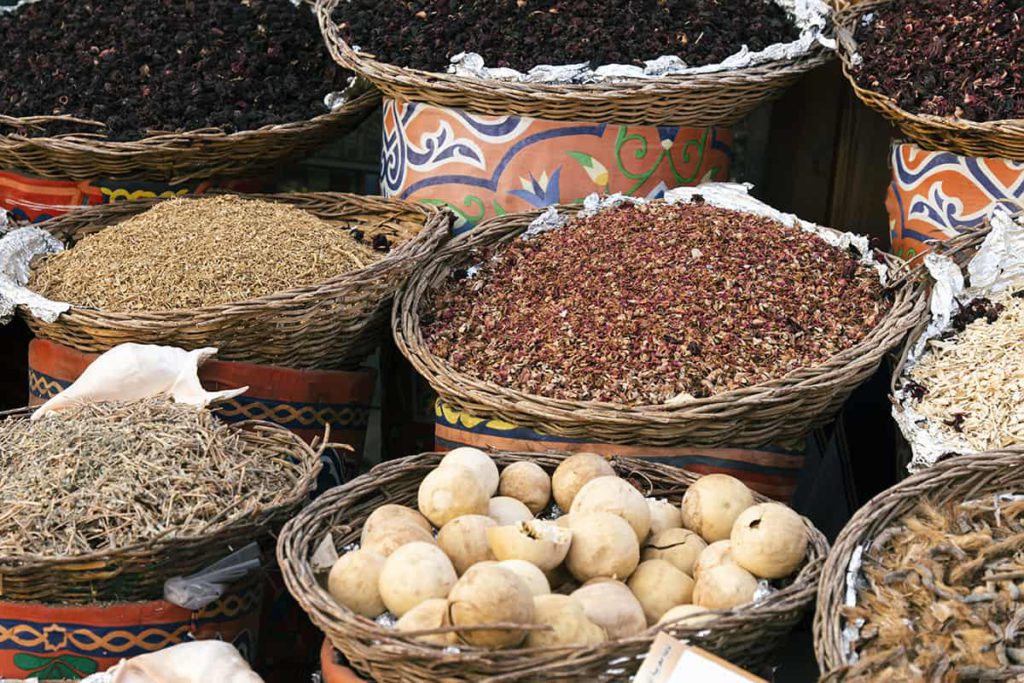The hieratic papyri related to medicine are those that have made us aware of the medical matters and the experience of the ancient Egyptians. The most valuable among those papyri is that of Smith, dating from the first half of the 18th century BC., called surgical papyrus. This text is a copy of an earlier work dating back to the years 2980-2700 BC, called the Edwin Smith Surgical Papyrus in which anatomy and the examination and diagnosis of different types of wounds are discussed.
Two other interesting papyri are the gynaecological Kahun, which describes topics about women’s health, including cosmetics and contraception, and the Ebers papyrus that details how to treat different diseases. Within these writings we can find recipes that could have magical components and could be made with many different elements, earthlier, such as substances of animal origin (blood, milk, eggs, honey, meat …); vegetables such as: acacia, peach, cedar, carob tree, olive, garlic, wheat, and minerals such as: alabaster, antimony, brick, sandstone …
Within one of the most analysed papyri, the Carlsberg papyrus, is a recipe that the Egyptians used to know if a woman was pregnant. According to the writings, the woman had to urinate in a bag full of wheat and another full of barley, if within a few days, both types of seeds germinated, it is that the woman was pregnant, if not, it meant that the result of the test was negative. It was also believed that, if barley germinated first, it would be a boy and if wheat did, a girl. This test was tested in the 60s by a group of researchers who verified that the test worked with 70% reliability.
The scientific explanation is that, probably, the high estrogen content present in the urine of a pregnant woman could promote seed germination.
Nature and plants have always been a source of help for humanity and, today, they remain so in many different ways.
At Monteloeder, we are committed to continuing to develop novel ingredients based on science and with beneficial effects on health, demonstrated by high quality clinical studies.
If you want to know more, contact us!
Virginia Morales
Europe Sales Manager
_____________
Las recetas medicinales en el antiguo Egipto
Los papiros hieráticos relativos a la medicina, son los que nos han dado a conocer las materias médicas y la experiencia de los antiguos egipcios. El más valioso entre esos papiros es el de Smith, que data de la primera mitad del siglo XVIII a. C., denominado papiro quirúrgico. Este texto es copia de una obra anterior que se remonta a los años 2980-2700 a.C., denominado papiro quirúrgico Edwin Smith en el que se habla de anatomía y sobre el examen y diagnóstico de distintos tipos de heridas. Otros dos papiros interesantes son el ginecológico de Kahun, que describe temas sobre la salud de la mujer, incluida cosmética y anticoncepción y, el papiro de Ebers que detalla cómo tratar distintas enfermedades. Dentro de estos escritos podemos encontrar recetas que podían tener componentes mágicos y podían estar elaboradas con muchos elementos distintos, mucho más terrenales, como sustancias de origen animal (sangre, leche, huevos, miel, carne…); vegetales como: la acacia, el melocotonero, el cedro, el algarrobo, el olivo, el ajo, el trigo y minerales como: el alabastro, el antimonio, el ladrillo, la arenisca…
Dentro de uno de los papiros más analizados, el papiro Carlsberg, se encuentra una receta que los egipcios utilizaban para saber si una mujer estaba embarazada. Según los escritos, la mujer debía orinar en una bolsa llena de trigo y otra llena de cebada, si a los pocos días, ambos tipos de semillas germinaban, es que la mujer estaba embarazada, si no, significaba que el resultado de la prueba era negativo. También se creía que, si la cebada germinaba primero, sería un niño y si lo hacía el trigo, una niña. Esta prueba fue testada en los años 60 por un grupo de investigadores que comprobaron que la prueba funcionaba con un 70% de fiabilidad.
La explicación científica es que, probablemente, el alto contenido de estrógenos presente en la orina de una mujer embarazada podría promover la germinación de la semilla.
La naturaleza y, en concreto, las plantas, siempre han sido una fuente de ayuda para la humanidad y, hoy en día lo siguen siendo de muchas formas distintas.
En Monteloeder, apostamos por seguir desarrollando ingredientes novedosos basados en la ciencia y con efectos beneficiosos para la salud, demostrados por estudios clínicos de alta calidad.
Si quieres saber más, ¡contacta con nosotros!
Virginia Morales
Europe Sales Manager


